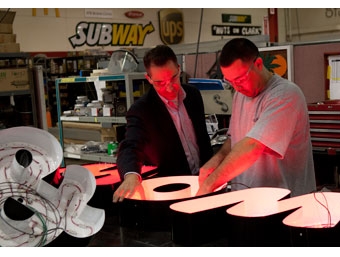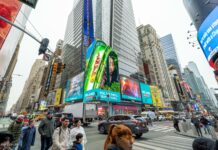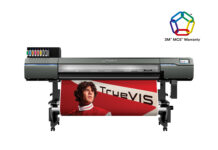The National Electric Code (NEC) right this very moment may be sitting on a desk somewhere or bookmarked on a computer. But how much does it play into the day-to-day work of an electric sign company? The answer: Perhaps more than you know.
Many communities and states adopt the NEC as their local standards. So when an electrical inspector shows up to inspect your latest sign installation, they’re relying on standards defined by the NEC.
That’s why the International Sign Association (ISA) has a dedicated team of volunteers who work closely to influence NEC regulations throughout the code cycle process. ISA staff and volunteers also work on similar projects with other code-setting bodies, such as with the American National Standards Institute (ANSI) and UL.
All of these groups have a tremendous impact on the day-to-day operations of the sign and graphics industry—and it’s important for us to be involved.
Our overarching goals often align: We want to create and install safe products. NEC wants to ensure that electrical products are safe as well. However our specific knowledge of sign components can help them better understand the practical implications of proposed changes.
NEC revisions occur every three years. We’re in the midst of a code cycle currently, with new changes coming out in 2017. We anticipate several fairly significant changes in a few key areas.
Labeling is required.
In the past, a sign worker could tell an electrical inspector that he was using compliant (Listed) products.
Now that component is required to include a label. This is the equivalent of a math teacher who wants the student to show how he arrived at the answer, not just that he had the correct one.
We’ve seen this shift occur with other organizations recently too: Trust but verify.
The label will help the electrical inspector trust that the component meets standards. It’s no longer acceptable to point the inspector to a listing. They’ll want to see the label too.
The new labeling will apply to ballasts, transformers, and electronic power supplies; power sources; and electrode connections.
In practical application, it means that sign and graphics companies will need to ensure that their supplies include these labels. With a year’s advance notice, manufacturers should have ample time to include these labels, and sign companies should be able to use up any existing stock of label-less components between now and 2017.
Photovoltaic-powered signs make a first appearance.
While photovoltaic (solar-powered) signs aren’t a significant part of our industry, they will make their debut in the NEC 2017 edition. Its inclusion will help electrical inspectors better understand this type of sign and ensure that these products are safe.
If solar-powered signs grow, smart sign companies will come up to speed quickly on these 2017 requirements.
Secondary wiring gets
a new look.
In the past, information related to secondary wiring of LED sign illumination systems has been presented in paragraph form. With the 2017 edition, it will be in a chart.
This may take a bit of time to get accustomed to finding the needed information, but essentially nothing has changed functionally.
At press time, this process is still not finalized. However it would take something significant to change these draft proposals, so we expect them to be adopted as they’re outlined above.
The NEC code is important to the work that we do. It’s also important that we work alongside these types of organizations, as they have a tremendous impact on our industry.
If you have any concerns about the NEC or any other regulation, email [email protected].











